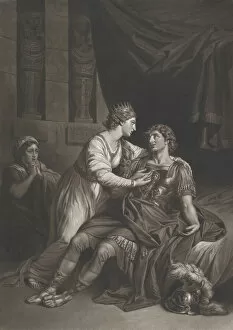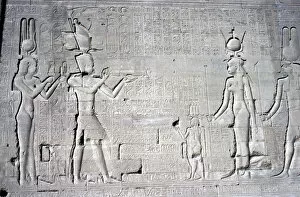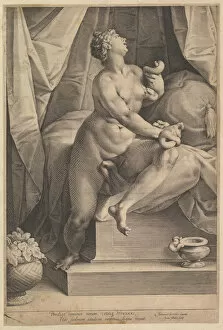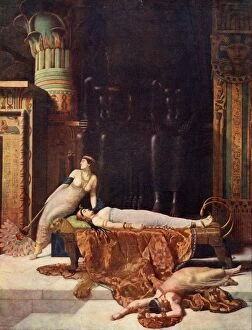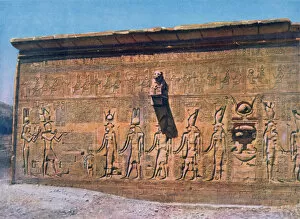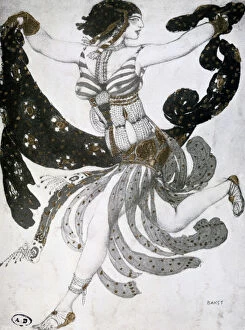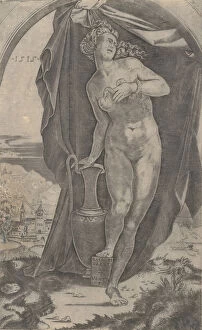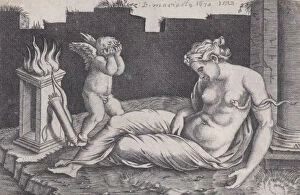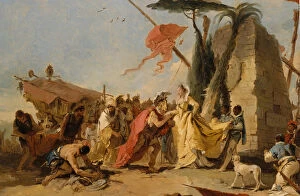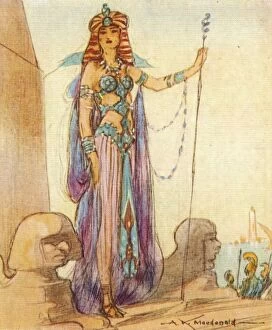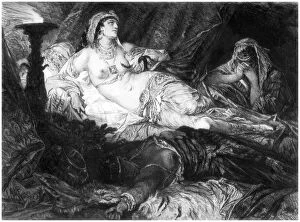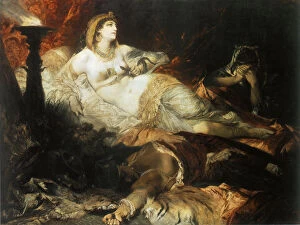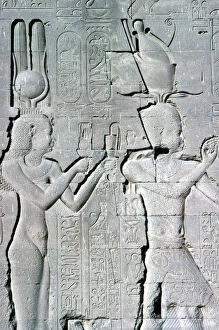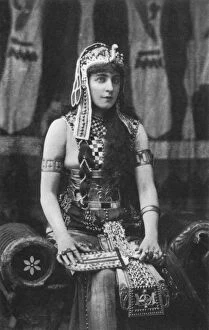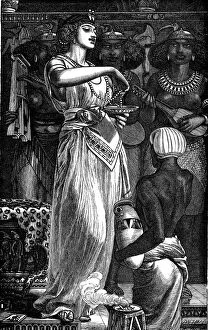Cleopatra Vll Collection
"Cleopatra VII: A Timeless Icon of Power, Love
For sale as Licensed Images
Choose your image, Select your licence and Download the media
"Cleopatra VII: A Timeless Icon of Power, Love, and Tragedy" From the pages of Shakespeare's masterpiece "Antony and Cleopatra" to the mysterious interview between Octavian and Cleopatra in 1890, this captivating Egyptian queen continues to fascinate us. Jan Muller's stunning portrait from around 1623 captures her regal beauty, while the bas-relief at the Temple of Hathor immortalizes her alongside Caesarion. Even in ballet costume design by Leon Bakst in 1909, Cleopatra's allure remains unmatched. Artists throughout history have sought to capture her essence; Johann Jakob Frey the Elder painted a mesmerizing portrayal in 1720, while Agostino Veneziano depicted her grace and charm in works dated 1515 and 1528. The Banquet of Anthony and Cleopatra by Jacob Jordaens transports us into their opulent world filled with love and decadence. Giovanni Battista Tiepolo's The Meeting of Antony and Cleopatra evokes their passionate connection during a tumultuous era. However, it is Guido Cagnacci's haunting depiction of The Death of Cleopatra that reminds us of her tragic end. John Maler Collier also captured this poignant moment in his painting from 1890 – both artists capturing the queen's strength even as she faced defeat. Cleopatra VII will forever be remembered as an enigmatic figure who defied societal norms for power but ultimately met a tragic fate. Her story continues to captivate our imagination through various art forms across centuries—a testament to her enduring legacy as one of history's most iconic women.

